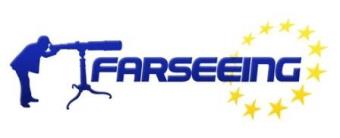Interview with Dr Lorenzo Chiari and Dr Helen Hawley-Hague of the FARSEEING project

Related topics
Health ICT Research & Innovation ICT Health, Demographic Change and Wellbeing Europe in a changing world - Inclusive, innovative and reflective societies EU countriesdate: 06/10/2015
Project: FAll Repository for the design of Smart ...
acronym: Farseeing
See also: CORDIS
Contact: Lorenzo Chiari
What are now the results now that the project is completed?
The complete FARSEEING technological infrastructure includes smartphones, smartshoes, a smart home system, a dedicated wearable unit for high-risk subjects, and a telemedical service model. These technologies have all been designed to promote usability and acceptability with both health professionals and users (see guidelines). FARSEEING's Fall Repository is the world's richest and largest sensor-based fall repository. Data collected from hundreds of subjects has allowed the identification of clinically relevant features in the user motor profile and functional level, which are predictive of future falls.
Other assessment tools and applications developed include:
FRAT-UP:
FRAT-up is a web-based fall risk assessment tool (http://ffrat.farseeingresearch.eu/) developed within FARSEEING. It has been designed for people aged 65 and over, living in the community. Given data about a subject, FRAT-up computes the probability of fall during a year. It has been presented in scientific papers (Cattelani et al., 2015, and Cattelani et al., 2014). FRAT-up exploits findings from the literature about risk factors and their quantitative impact on the risk of falling. The tool has been validated on three datasets from three epidemiological studies, namely the InCHIANTI study, the ActiFE-Ulm study, and the English Longitudinal Study of Ageing (ELSA).
Instrumented versions of standardized functional tests of mobility:
To be used as tools for fall risk assessment (e.g. Timed up and Go Test). These Apps have been tested and validated in real-life settings.
FARSEEING Taxonomy:
One problem in interpreting results of studies in the area of technology and falls monitoring, detection and prevention is that, in the literature, the interventions, the technologies and the outcomes are not well described. Therefore, it is difficult to replicate studies and to combine studies for meta-synthesis, thus making it difficult to establish the effectiveness of technologies and interventions in this area. The aim of the taxonomy was to classify and describe studies which use ICT devices to detect falls, monitor or promote movement-related function and physical activity in fall prevention. To access and to categorise either an existing or new intervention please go to taxonomy.farseeingresearch.eu .
How do the results feed into the work on fall prevention carried out within the A2 Action Group?
FARSEEING results actively contribute to the A2 action groups aims of an integrated person centred pathway, through its work around falls detection and its telemedicine models. The repository has the potential to inform the work on data collection and evidence as well as falls detection. FARSEEING were one of the main organisers of the first European Falls Festival in March 2015 on Technology in the prediction, detection and prevention of falls . Here we disseminated our results to a broad European audience (and wider) and FARSEEING partners are actively engaged in A2 and continue to be following the completion of FARSEEING. Next year we will be involved in the second edition of the Festival which will be hosted in Bologna (23-24 February 2016) and will debate on the implementation of innovation in policy and practice (more information).
What are the next challenges and what will you do next?
A spin off company has been set up by researchers at the University of Bologna to exploit some of the wearable and mobile solutions developed as part of FARSEEING (mHealth Technologies s.r.l). Some members of the FARSEEING consortium have recently been awarded (PreventIT) further EC funding in the framework of Horizon2020 (PHC-21) to deliver a feasibility trial which further develops and tests the FARSEEING smartphone system. Funding (NIHR) in the UK has been successfully secured which will run another feasibility Randomized Control Trial within Manchester's health services which adopts the smartphone system and builds on some of the work from FARSEEING. Finally, some of the results of FARSEEING are been transferred to empower fall risk assessment in a Randomized Control Trial about fall prevention (the Precisa study) funded by the Emilia-Romagna Health & Care Agency in the framework of the EIP-AHA project PROFITER.
